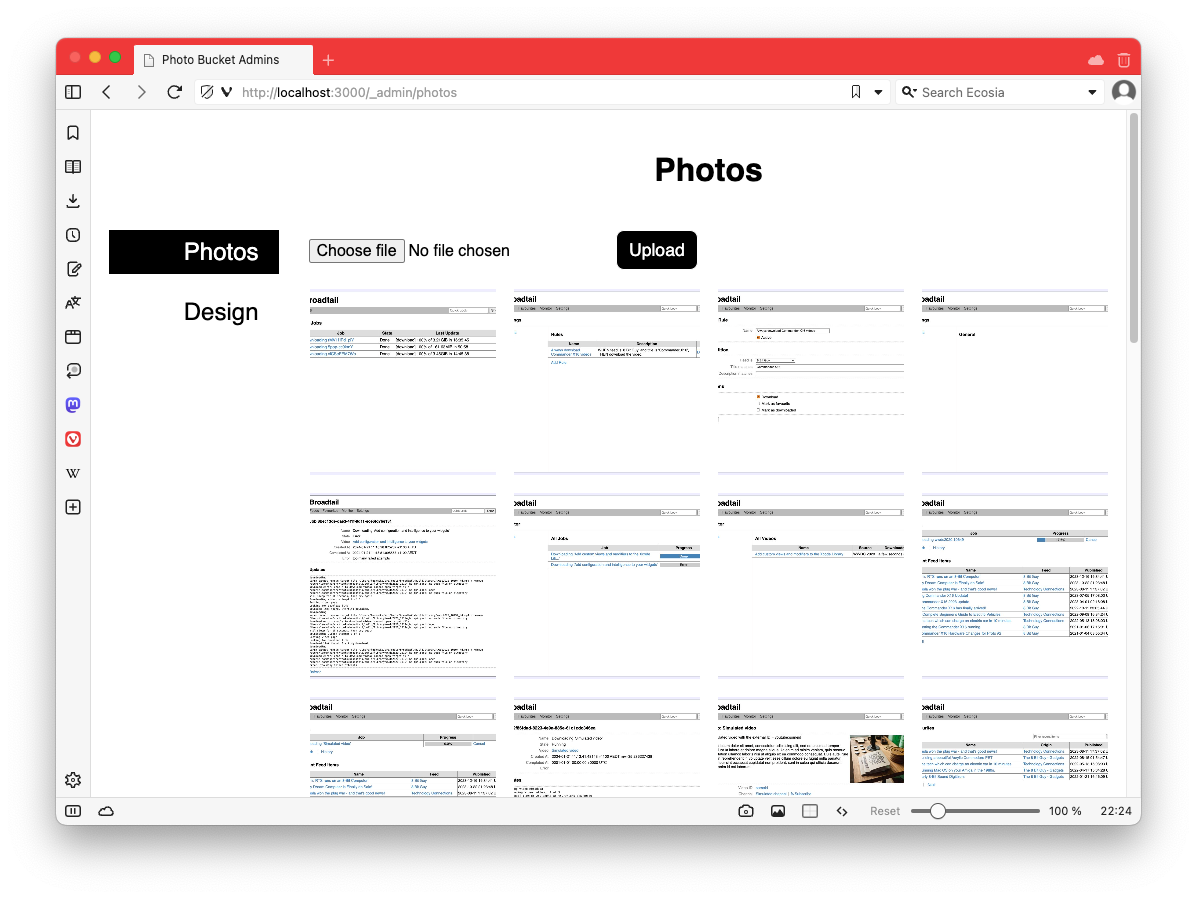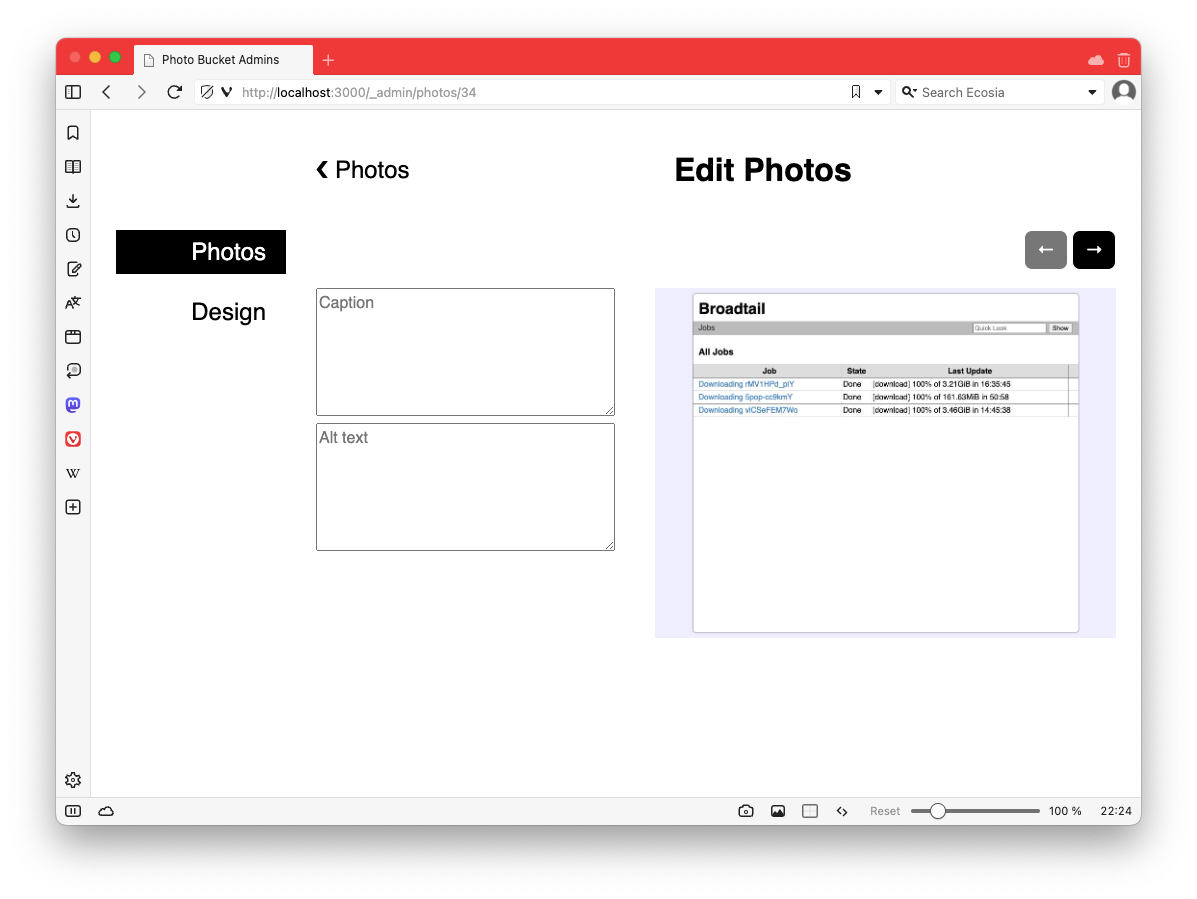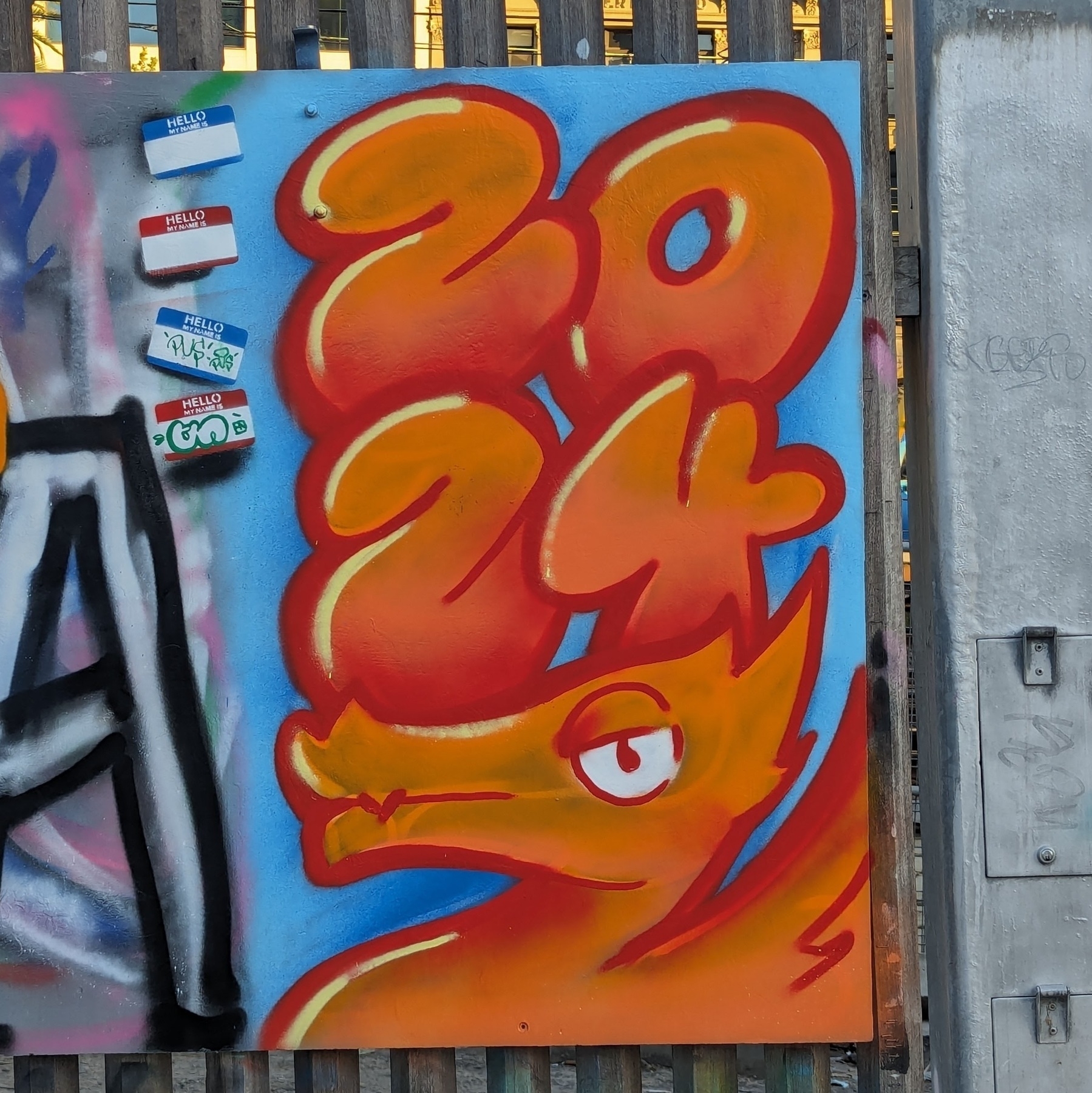-
Another attempt at working out how best to heat up hot cross buns from the freezer in a cold oven. Tried 150°C for 20 minutes. It’s better. I think it’s pretty close. But still not warm enough. Maybe 22 minutes next time.
-
Holding pattern.

-
Implicit Imports To Load Go Database Drivers Considered Annoying (By Me)
I wish Go’s approach to loading database drivers didn’t involve implicitly importing them as packages. At least that way, package authors would be more likely to get the driver from the caller, rather than load a driver themselves. I’ve been bitten by this recently, twice. I’m using a GitHub Linux driver to build an ARM version of something that needs to use SQLite. As far as I can tell, it’s not possible to build an ARM binary with CGO enabled with these runners (at-least, not without installing a bunch of dependencies — I’m not that desperate yet). Continue reading →
-
Deciding where data files should be placed on a Linux system. It’s a bit strange how
/var/libwas chosen for this, instead of something like/var/local. I would’ve thought that’d make more sense, much like how binaries are placed in/usr/local. -
Shows how much of a romantic I am: it took a 10 minute tram ride before I realised why so many people were carrying flowers. 💐
-
Via A Learning a Day by Rohan. It resonated with me as well.
-
Spent some time this evening working on my image hosting tool. It’s slowly coming along, but wow do I suck at UI design (the “Edit Photo” screen needs some rebalancing).


-
It’s hot cross bun season again, and as always, I have to relearn how I heated them up last year. I thought the 15:150 rule would suffice: 15 minutes from frozen in an 150°C oven from cold. They were editable, but they weren’t warm enough for my taste. I’ll have to bump it up next time.
-
Back at Fitzroy Gardens for the PGBC Grand Final. Weather’s absolutely stunning. May even have a chance of winning this year. 🏆

-
For those who celebrate… 🐉🧧

-
For anyone else who has recently installed Vivaldi, and wants to get rid of the unnecessary padding around the address bar that seems to be the default now, this forum post worked a treat.
-
Safari, what the fudge do I need to do to get you to recognise that I go to Google Photos quite frequently, so as to stop you from deleting the authentication cookie? Having to constantly login is so unbelievably frustrating! 😡
-
Reading Greg Morris’s post about self-censoring on his own blog got me wondering why more blogging CMS’s don’t support private posts. Well, I guess I do know why: generally a blogging CMS is to make posts available on the open web. But for CMS’s that are geared towards individuals that just want a place to write, it seems like having the ability to publish a post that is only visible to yourself would be a nice feature. And yeah, I know there are some CMS’s that do support this, but it would be nice to see this on the newer ones that have been released.1
-
And no, drafts or “in review” posts don’t count; they need to be fully published posts, completely integrated into the timeline and nav that are otherwise hidden from public view. ↩︎
-
-
🔗 RS.S Joy
This was shared in the Hemispheric View Discord a few days ago. A lot of really good blogs listed (enrolled? As in blogroll?) there. I took a look at it yesterday and was just ducking in and out of blogs for ages.
-
Must say rebinding the keyboard shortcut for Keyboard’s Maestro’s Clipboard Picker has been quite successful. It’s definitely easier to remember and invoke, and I’m using the clipboard picker a lot more now than I was previously (which was never).
-
Rubber-ducking: On Context
I’m torn between extracting auth credentials in the handler from a Go Context and passing them as arguments to service methods, or just passing the context and having the service methods get it from the Context themselves. Previously, when the auth credentials just had a user ID, we were doing the former. But we’re now using more information about what the user has access to and if we were to continue doing this, we’ll need to pass more parameters through to the service layer. Continue reading →
-
Had a rubber-ducking session with myself between passing auth info within the Go Context through to the service methods, or passing them as explicit parameters.
I decided to go with passing it as explicit parameters. It’s kinda painful to see both the auth info passed through in both the Go context and a parameter. But it will result in more readable code, and it does make it clear that this information is needed. Plus, we’re already doing this already in the codebase I’m working on already (previously it was just the user ID, but we’re going to be including some additional auth info alongside it).
I am kinda glad that this tension has been resolved. It’s been weighing on me a little.
Also, for a bit of fun, I wrote this rubber-ducking session in a post. Well, it’s not entirely for fun: that’s how I was able to work through the problem. But writing it as a dialogue and posting it online was fun.
-
Rubberducking: On Context
I’m torn between extracting auth credentials in the handler from a Go Context and passing them as arguments to service methods, or just passing the context and having the service methods get it from the Context themselves. Previously, when the auth credentials just had a user ID, we were doing the former. But we’re now using more information about what the user has access to and if we were to continue doing this, we’ll need to pass more parameters through to the service layer. Continue reading →
-
It would be nice if the CSV diff in Gitlab had a “row order not important” mode, in that any changes in row order are treated almost like whitespace changes. It won’t be something that’ll apply to all CSV files. But more often that not, the CSV files I deal with are not dependent on any row order.
-
Oof, turns out you can’t trust a browser to tell you the right MIME type for a file upload. I expected some logic involving magic numbers, but it just looks like a mixture of guessing based on file extension, deferring to the OS, and giving up and sending you
application/octet-stream. -
Spent the last few days building a small site which will convert an OPML file of RSS subscriptions into an HTML list of links to their respective websites. I needed it for a blogroll I’m planning to add, but I figured this might be something others may find useful.
-
Goland Debugger Not Working? Try Upgrading All The Things
I’ve been having occasional trouble with the debugger in Goland. Every attempt to debug a test would just fail with the following error: /usr/local/go/bin/go tool test2json -t /Applications/GoLand.app/… API server listening at: 127.0.0.1:60732 could not launch process: EOF Debugger finished with the exit code 1 My previous attempts at fixing this — upgrading Go and Goland — did get it working for a while, but recently it’s been happening to me again. Continue reading →
-
I’m a bit surprised that Jira doesn’t have a notion of drafts. You start writing a task, then you think that it might be best to know whether it’s worth doing. What do you do with this half written task? Do you create it? At the moment I just keep them in an open browser tab, which is… not ideal.
-
Need to find a way to represent a collection of IDs in Go, all representable in different ways, with each one having a different type. Kinda wish Go had algebraic data type like Elm or Haskell, or even just enums with associated data like Java or Swift. Would be so useful for this.
-
Discovered a new artist through a YouTube channel I watch. They make some pretty good chill-out music. I can recommend Synths Working Overtime and Music For Podcasts 6, particularly “Cloudloop” (track 6) and “Systematic” (track 7). 🎵